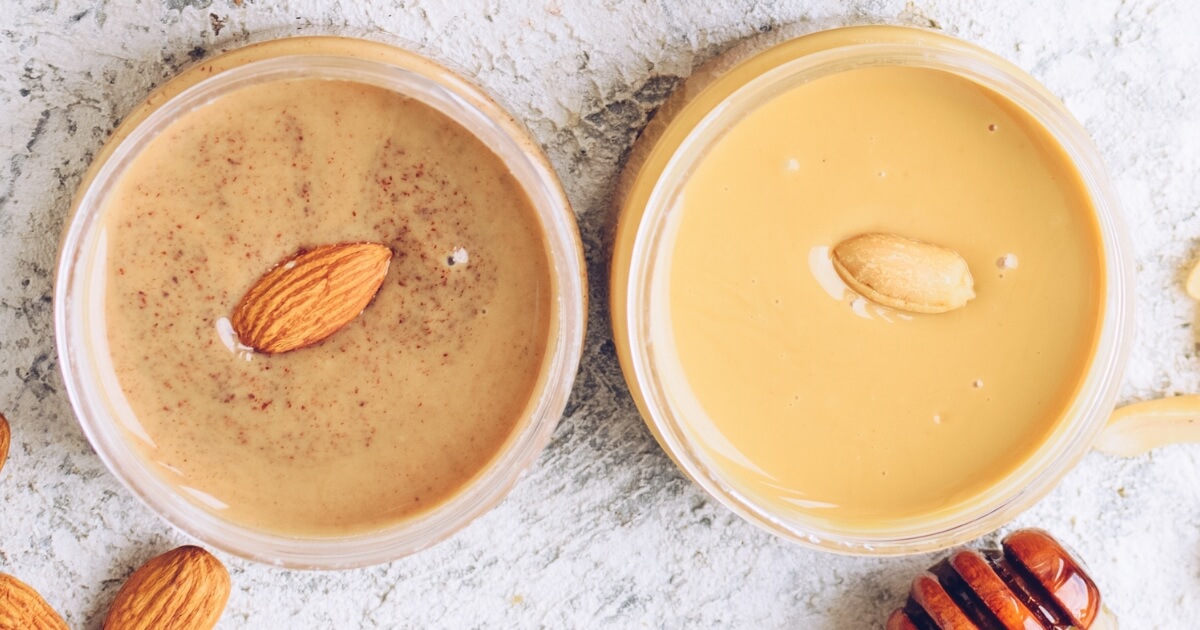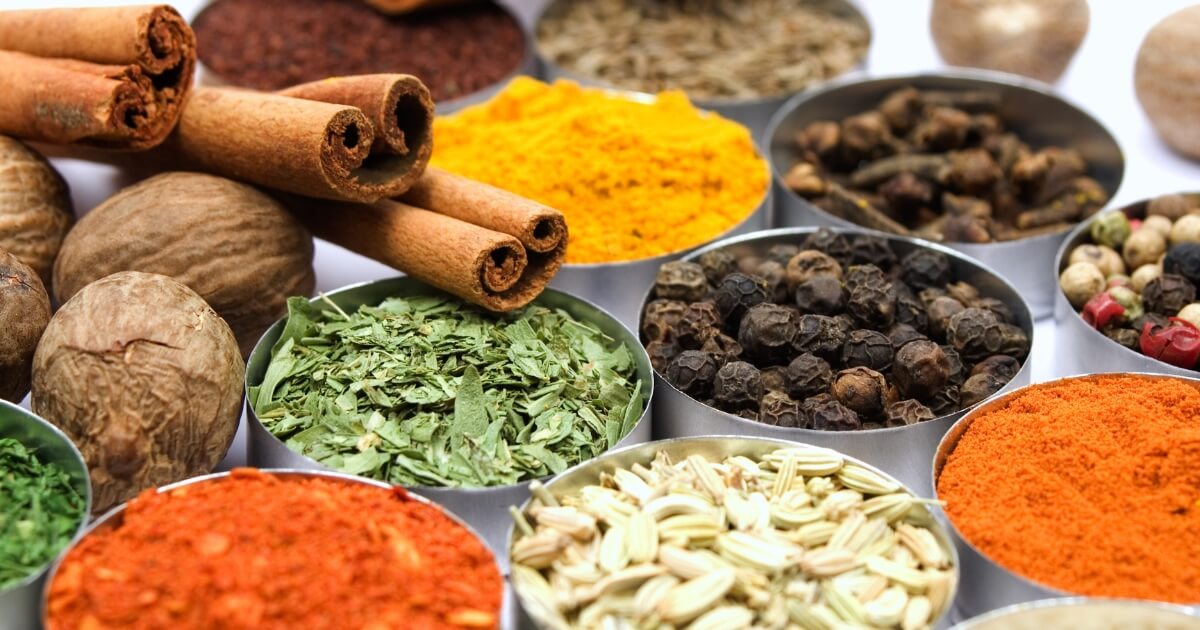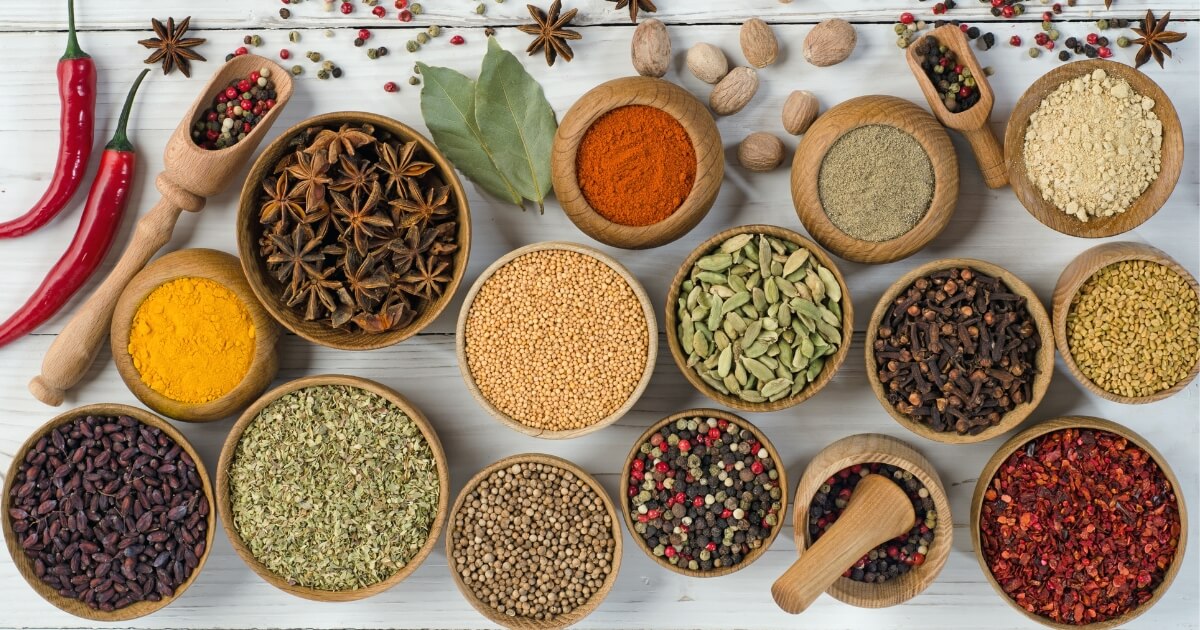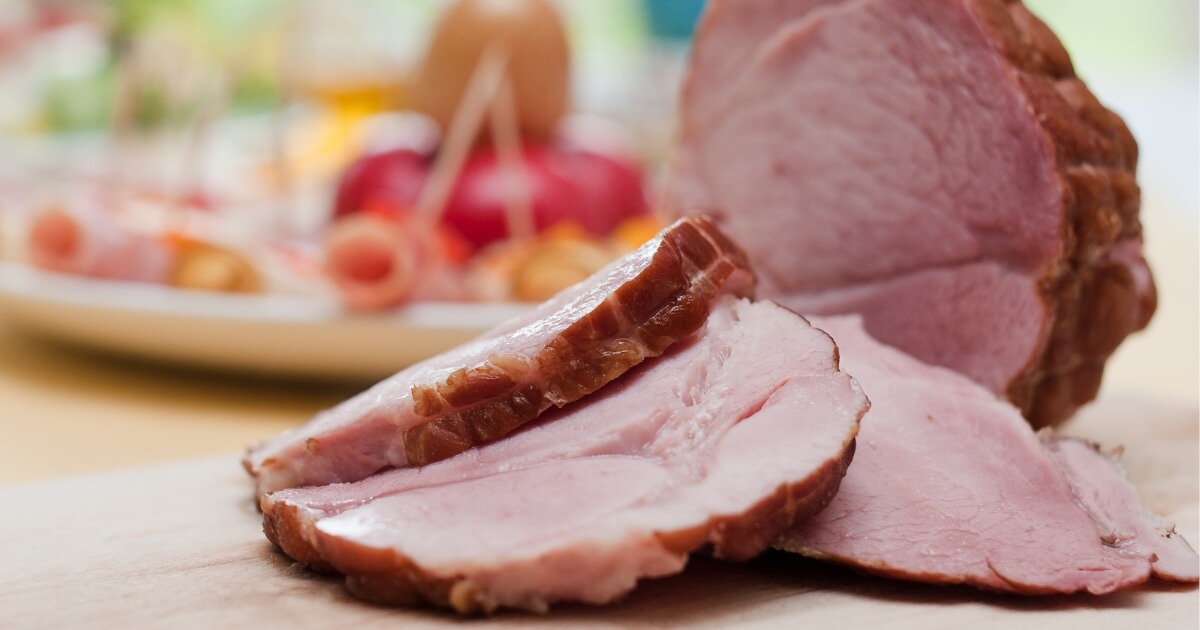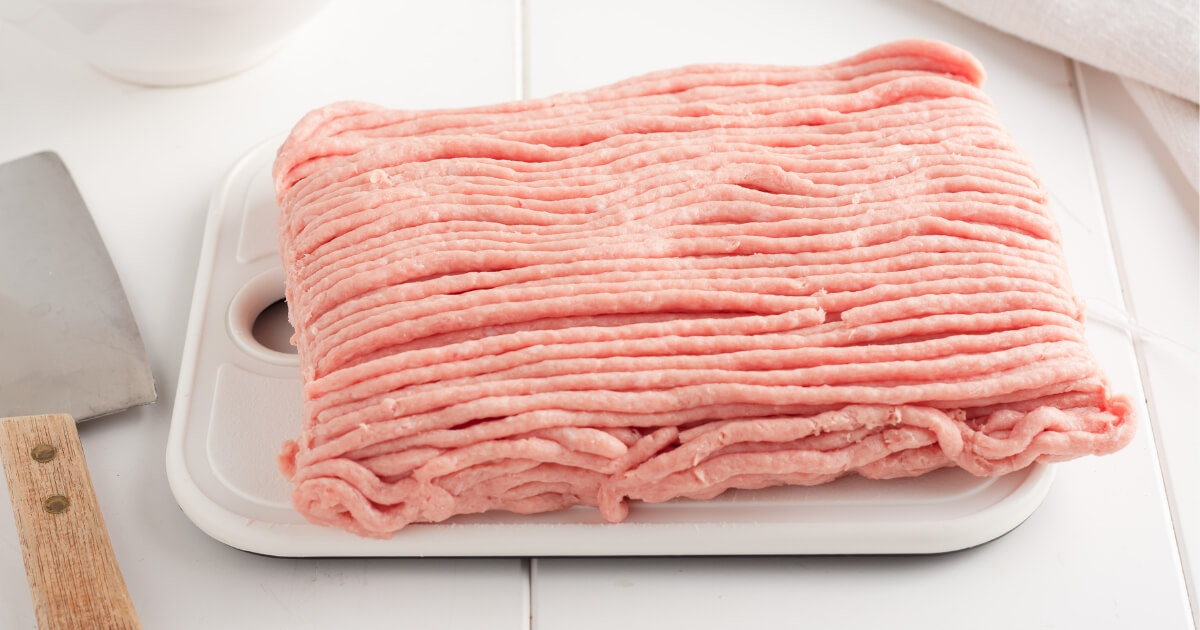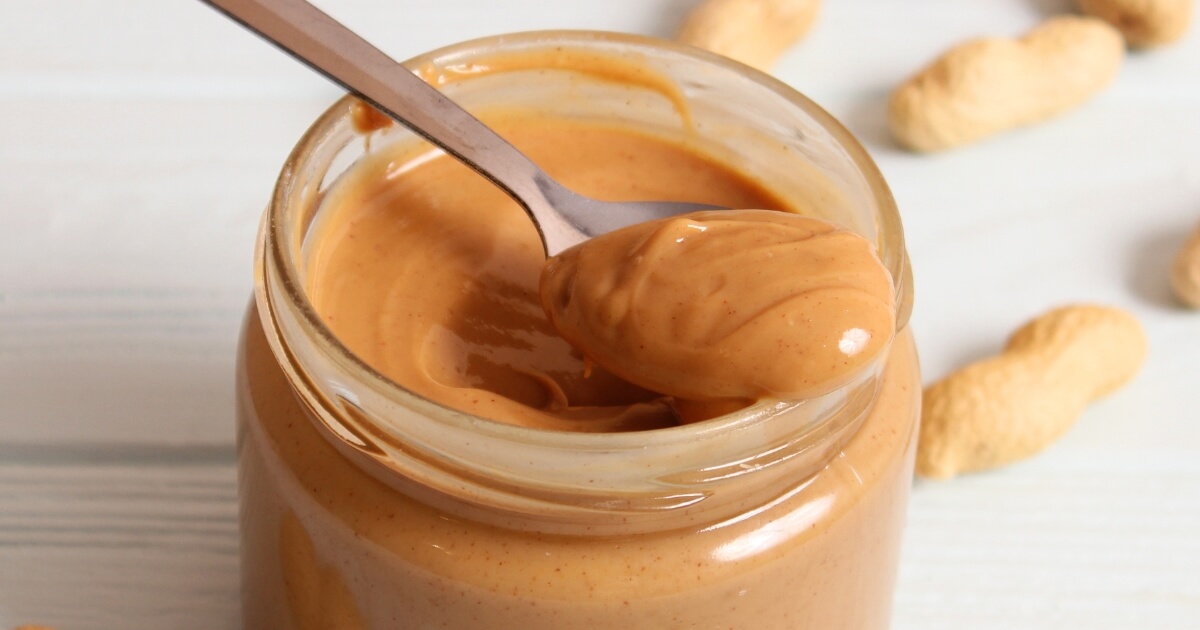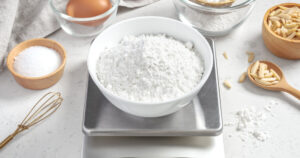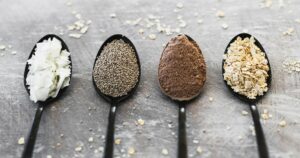You’re in the middle of whipping up a creamy chicken salad, and you realize you’re out of mayonnaise. Trust me, I’ve been there. But don’t worry.
There are plenty of ingredients that can step in and save your dish. From Greek yogurt to sour cream, these mayo alternatives mimic mayo’s creamy texture and bring their unique flavors to the table.
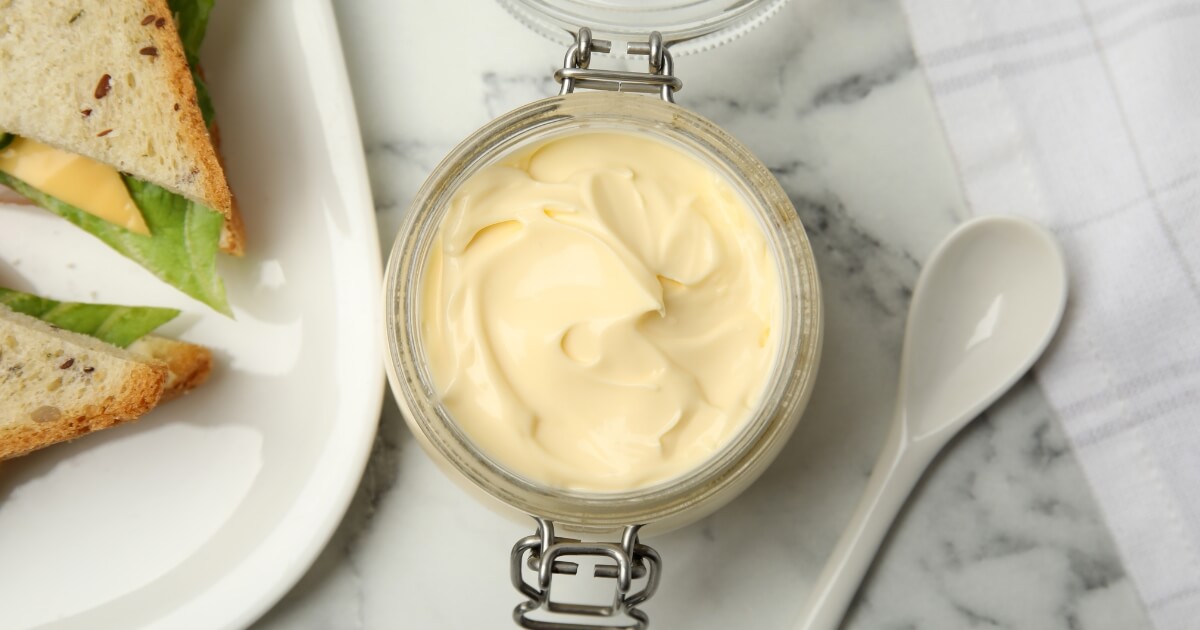
Whether you’re vegan, watching your waistline, or just looking for something you might have on hand, this guide will help you find the best substitutes for mayonnaise for all your favorite recipes, from vegan-friendly silken tofu to tangy Greek yogurt.
Sour Cream
Sour cream is my favorite mayo substitute because it’s creamy and tangy, almost like mayo, making it a solid choice for dishes like dips, dressings, and cold salads. It’s especially good when you want that tangy flavor to shine.
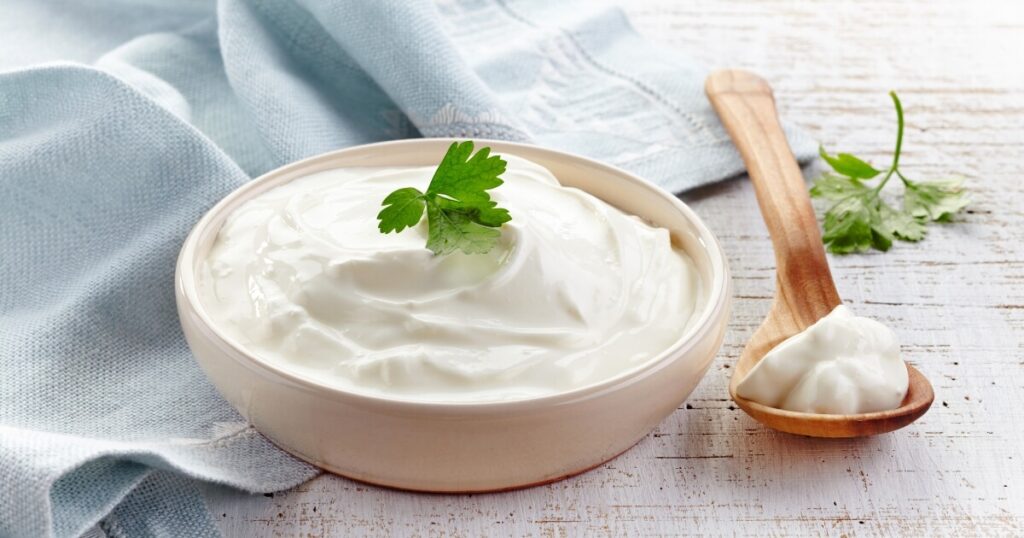
When it comes to ratios, sour cream is pretty straightforward. You can use it in a one-to-one ratio with mayo.
So, if your recipe calls for a cup of mayo, go ahead and use a cup of sour cream. It’s that simple, and it works like a charm in most recipes where it’s not supposed to be the star.
Sour cream has a tangier flavor than mayo. If you’re looking for a more neutral base, this might not be your best bet. Plus, it can be higher in fat content, so if you’re watching your waistline, you might want to use it sparingly.
Sour cream is usually pretty affordable and easy to find. You’ll see it in the dairy section of most grocery stores, right next to the yogurt and cream cheese. Finding sour cream should be a breeze whether you’re in a big city or a small town.
Greek Yogurt
You’re making tuna salad, and you want to keep it light. How about Greek yogurt? It’s creamy like mayo but brings a tangier flavor to the table. It’s a great alternative to mayonnaise in dishes like egg salad, pasta salad and even as a base for salad dressings.
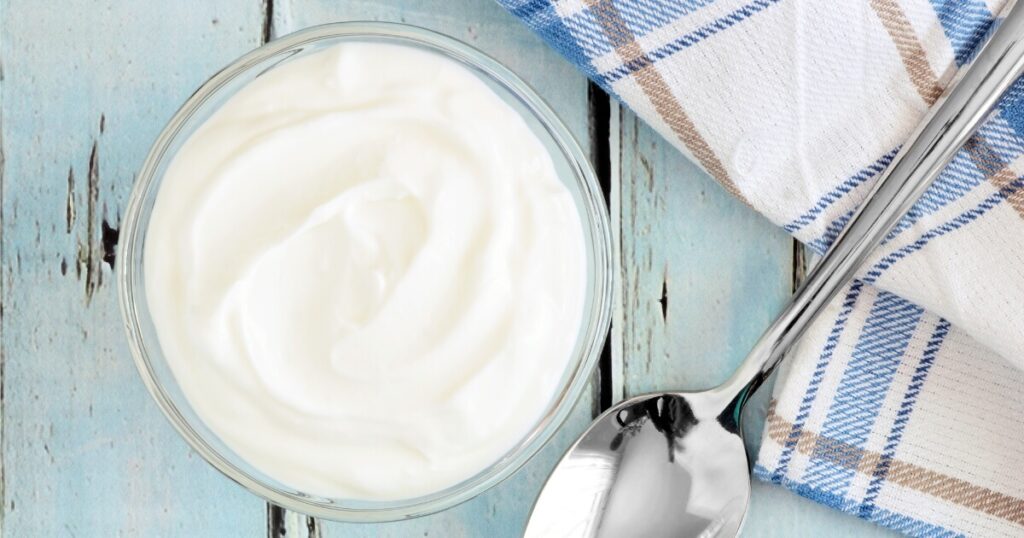
When it comes to ratios, Greek yogurt is pretty easy to work with. You can use it in a one-to-one ratio with mayo.
So, if your recipe calls for a cup of mayo, feel free to swap in a cup of Greek yogurt (16 tablespoons). It’s especially good in dishes where you want that tangy flavor to stand out.
Greek yogurt is not always the cheapest but often comes with a variety of fat-content options.
Cream Cheese
Before you panic, consider cream cheese! It’s rich, creamy, and a fantastic alternative to mayonnaise.
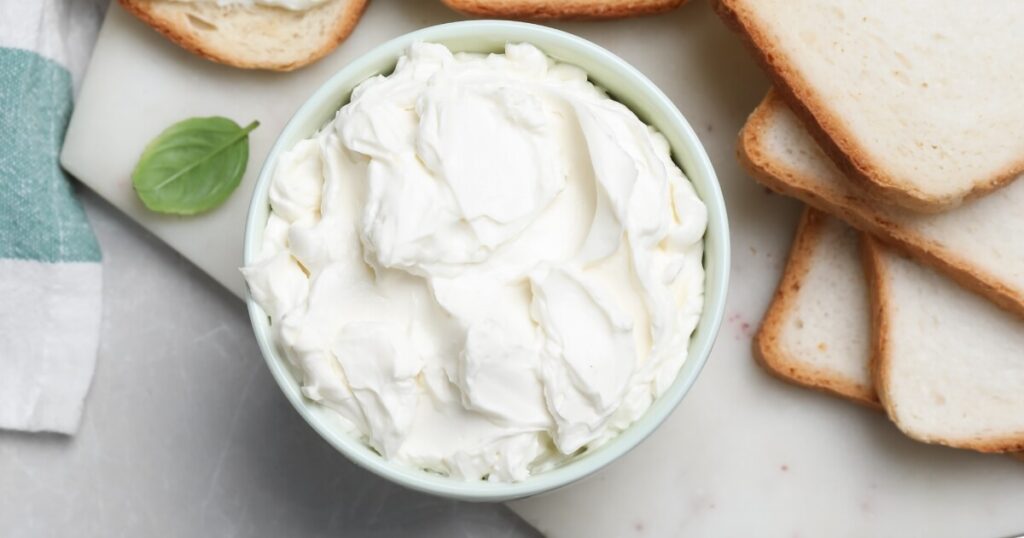
When it comes to ratios, cream cheese is denser than mayo. A good rule of thumb is to use about three-quarters the amount of cream cheese as you would mayo.
If your recipe calls for a cup of mayo, go for three-quarters of a cup of cream cheese. You can always add more if you need to.
If you’re watching your waistline, this might not be your best option. It’s delicious but can make your dish heavier than you might like.
Cream cheese is a staple and can be found at big-box retailers or your local corner store. It also comes with different fat-content options and even flavored varieties.
Silken Tofu
You’re craving a creamy salad dressing but want to keep it vegan. Silken Tofu is your new best friend. It’s got a neutral flavor that makes it a versatile base for all sorts of dishes. From salad dressings to sandwich spreads, it’s a solid mayonnaise alternative that won’t clash with other flavors.
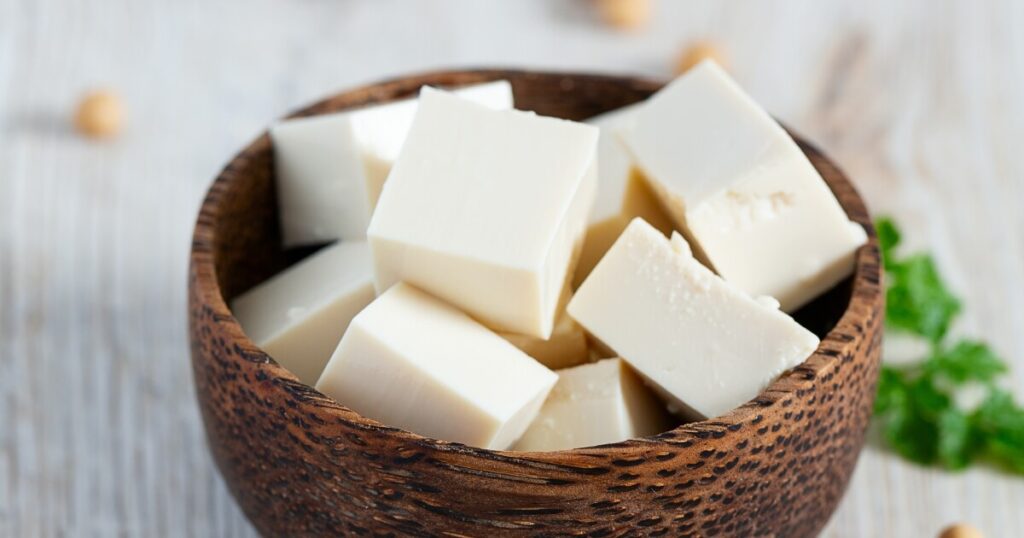
When it comes to substituting, silken tofu is pretty straightforward. You can use it in a one-to-one ratio with mayonnaise.
If your recipe calls for a cup of mayo, you can swap in a cup of blended silken tofu. Just toss it in a food processor to get that creamy consistency, and you’re good to go.
But silken tofu doesn’t bring much to the table in terms of flavor. It’s neutral, which is great for versatility, but might require some extra seasoning. A splash of apple cider vinegar or a bit of lemon juice can add that tangy kick you might be missing.
As for cost and availability, silken tofu is generally affordable, often cheaper than specialty mayos. You can find it in the refrigerated section of most health food stores and many mainstream grocery stores.
Avocado
So you’re making a tuna salad, and you want to switch things up. How about avocado? It’s creamy like mayo but brings its own distinctive, healthy flavor to the mix. Whether you’re making a sandwich spread or a base for salads, mashed avocado can be a delicious mayonnaise substitute.
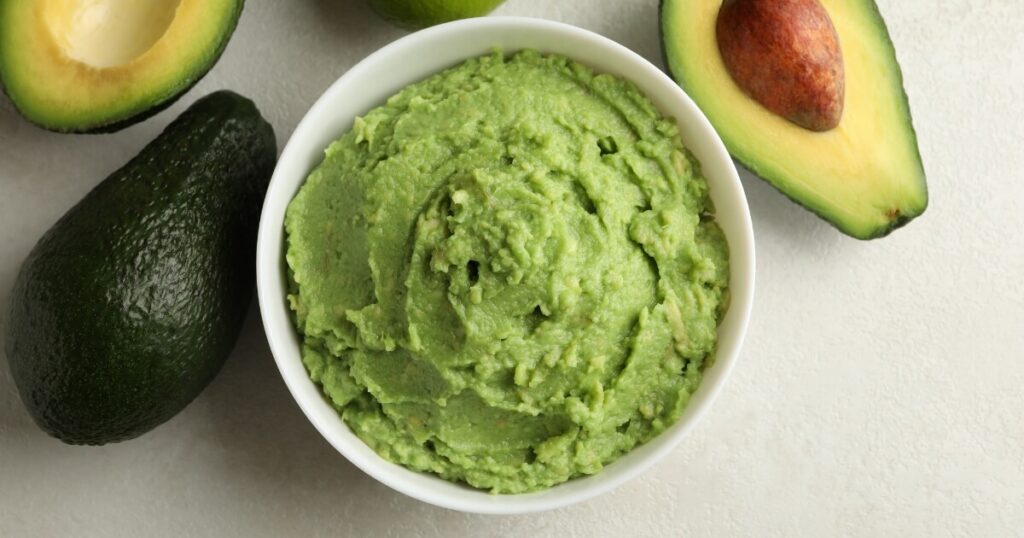
When it comes to ratios, avocados are pretty forgiving. You can use an equal amount of mashed avocado to replace mayo. Just make sure it’s ripe for that creamy texture.
Keep in mind that avocado has a stronger, more assertive flavor than mayo. If you’re looking for a neutral base, this might not be the best fit. Also, avocado browns quickly, so it’s best used in dishes with some acidity or will be eaten immediately.
Just 2 or 3 avocados can be a bit pricier than your average jar of mayo, especially if they’re out of season. But they’re packed with healthy fats and nutrients, so you’re getting more than just flavor.
Tzatziki
You’re in the mood for a chicken salad with a twist. Why not try tzatziki? It’s yogurt-based and comes with added herbs like dill and cucumber. It’s a zesty alternative to mayonnaise that can add some pizzazz to your favorite recipes.
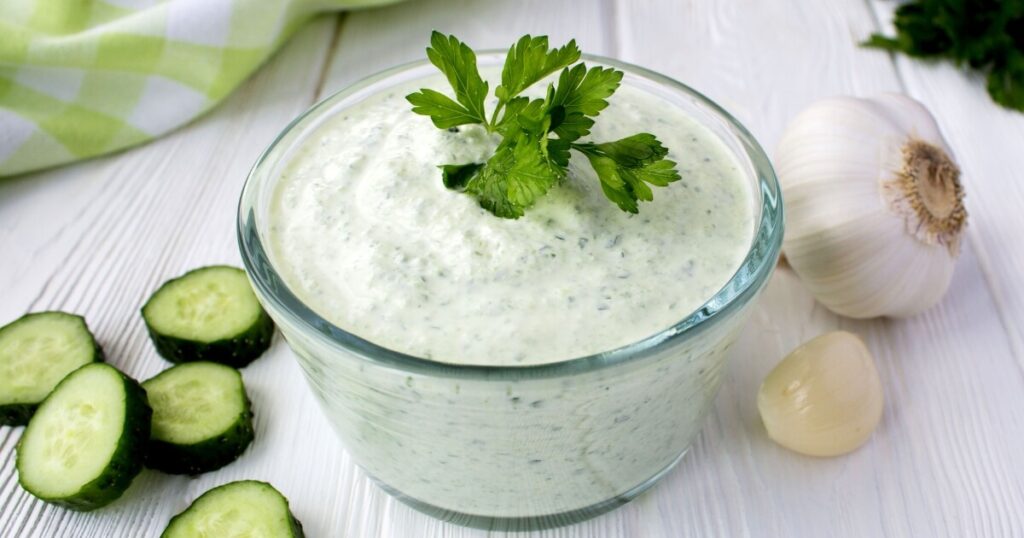
You can use it in a one-to-one ratio with mayo. It’s especially good in cold salads where that extra zing can really shine.
But tzatziki has a more complex flavor profile than mayo. It’s got herbs and sometimes garlic, which might not work in every dish.
Tzatziki is pricier than regular mayo, but it might get you by if you’ve got some on hand.
Coconut Cream
Coconut cream has a rich, tropical flavor and creamy consistency, making it a fun alternative to mayonnaise. It’s especially good in dishes where you want to add a bit of exotic flair.
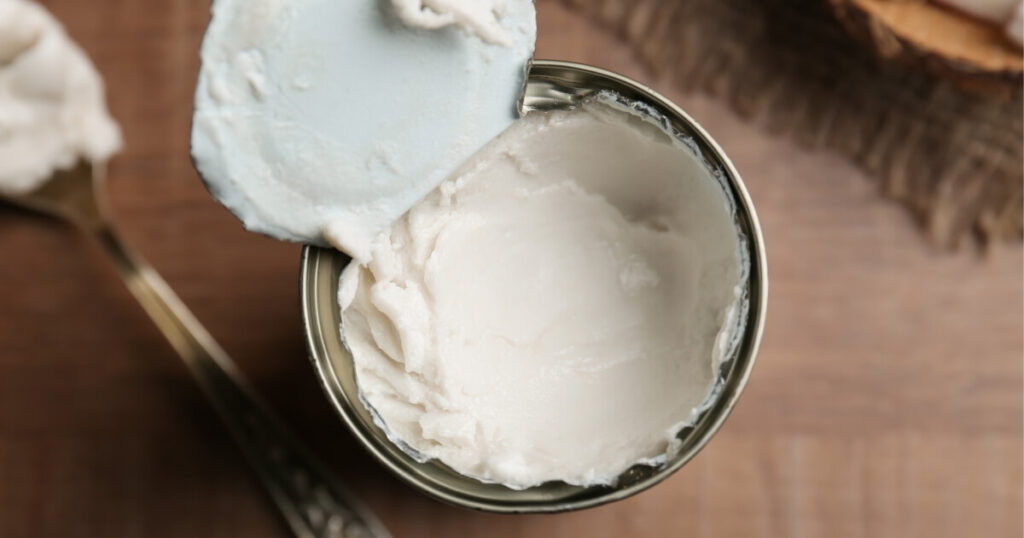
When it comes to swapping, coconut cream is a bit richer than mayo. A good rule of thumb is to start with about half the amount of coconut cream you would mayo. You can always add more if you need to.
However, coconut cream is high in saturated fats. This might not be the best option if you’re watching your health. Plus, the tropical flavor, while delicious, might not be a good fit for every dish.
Most grocery stores will stock it, especially those with a good international foods section. And if you’re shopping at a health food store, you’re almost guaranteed to find it.
Buttermilk
You’re making a homemade salad dressing, and you’re fresh out of mayo. How about buttermilk? It’s tangy and adds a nice zing. It’s a good alternative to mayonnaise, especially when you’re looking to make your dish a bit lighter.
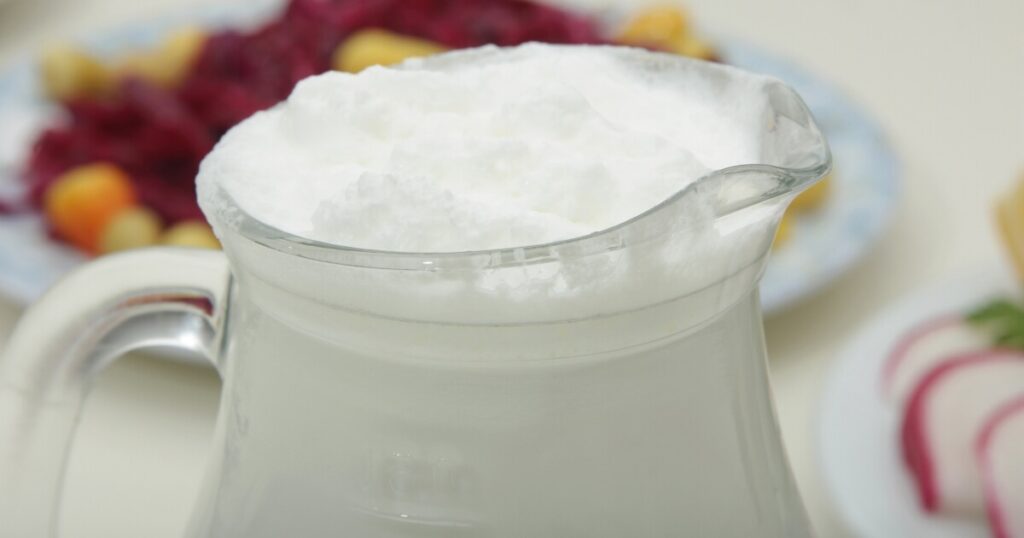
When it comes to ratios, buttermilk is much thinner than mayo. You’ll want to use less, maybe about half the amount you’d use for mayo.
So, if your recipe calls for a cup of mayo, try starting with half a cup of buttermilk. You can always add more to get the consistency you like.
Again, buttermilk is a liquid, not a spread, so it won’t work in recipes where you need a thick, creamy texture. It’s best suited for dressings and marinades, not so much for spreads or as a base in chunky salads.
Hummus
You’re making a sandwich, and you want something different than the usual mayo. How about hummus? It’s chickpea-based and brings a nutty flavor that can elevate your dish. It’s a great alternative to mayonnaise in sandwiches, wraps, and even as a base for salads.
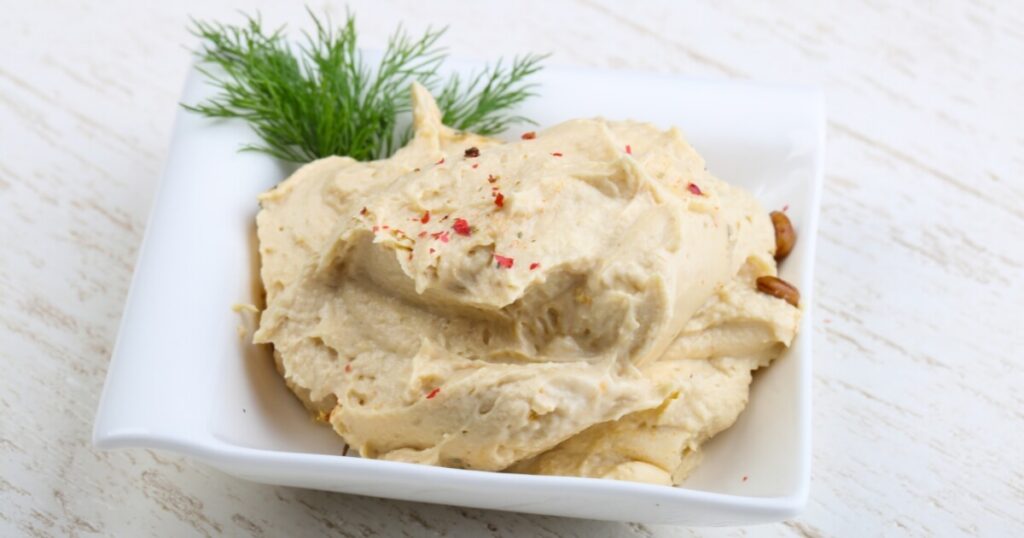
You can use it in a one-to-one ratio with mayo. But hummus has a more distinct flavor than mayo. It’s nutty and often comes with added spices like garlic or tahini.
As for cost, hummus can be a bit pricier than regular mayo, especially if you’re going for the store-bought kind. And the shelf life of hummus isn’t as long as mayos shelf life.
But it’s widely available in grocery stores across America, usually in the deli or refrigerated section. You’ll find various flavors and brands, from classic to spicy, giving you plenty of options to choose from.
Nut Butter
Nut butters are creamy like mayo but bring a strong nutty flavor to the table. It’s a fun alternative to mayonnaise, especially in dishes where you’re looking to add some depth of flavor.
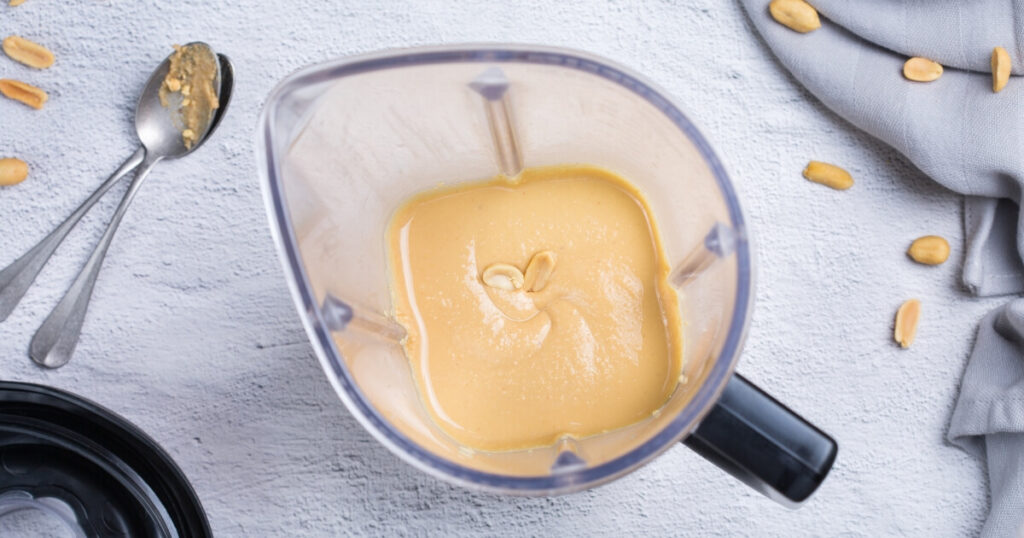
If your recipe calls for a cup of mayo, I would start with a quarter cup of nut butter. You can always add more if you need to.
Nut butter has a strong nutty flavor that won’t work in every dish. It’s not the best fit if you’re looking for a neutral base. Plus, it’s higher in fat content and calories, so it’s not the healthiest alternative.
When it comes to cost, nut butters are pricier than your average jar of mayo. You’ll find a range of options, from almond to cashew to peanut butter, so you can pick the one that best suits your dish.
Tahini
How about tahini? It’s made from ground sesame seeds, and it’s got a slightly bitter, nutty flavor that can add a new dimension to your dish. It’s a great option for salad dressings or as a spread for sandwiches.
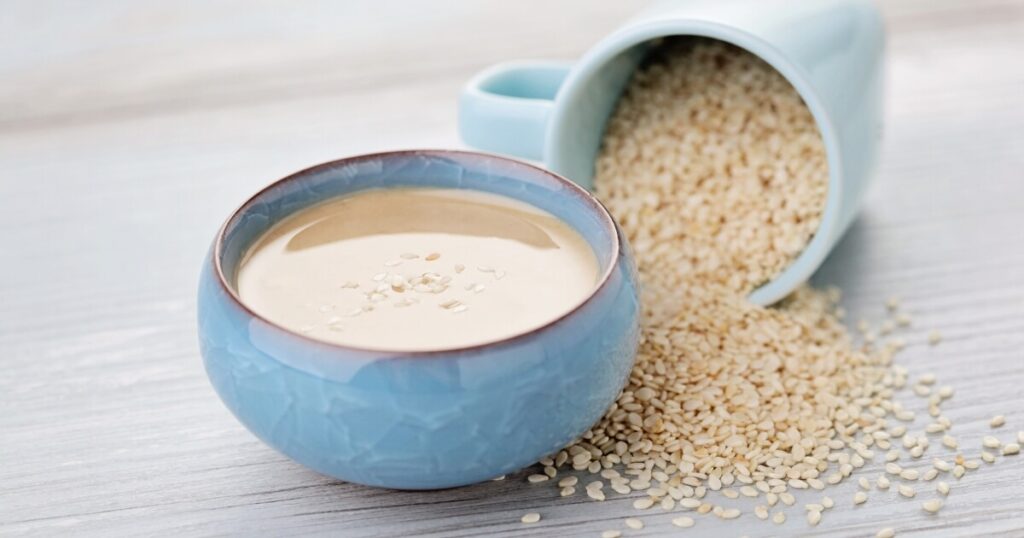
When it comes to ratios, tahini is a bit thicker than mayo. You can use it in a one-to-one ratio, but you might want to thin it out a bit with some lemon juice or water.
So, if your recipe calls for a cup of mayo, a cup of tahini should work, but feel free to adjust to your liking. Tahini has a distinct, slightly bitter flavor that might not be everyone’s cup of tea.
If you’re not a fan of that bitter edge, this might not be the substitute for you. It’s also not as creamy as mayo, so it might change the texture of your dish.

